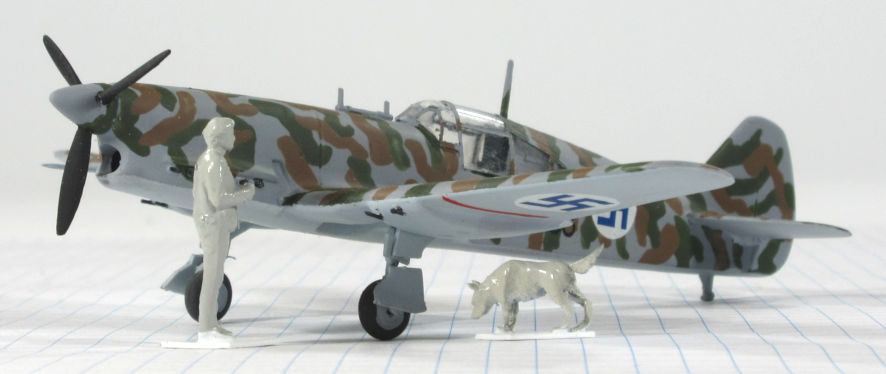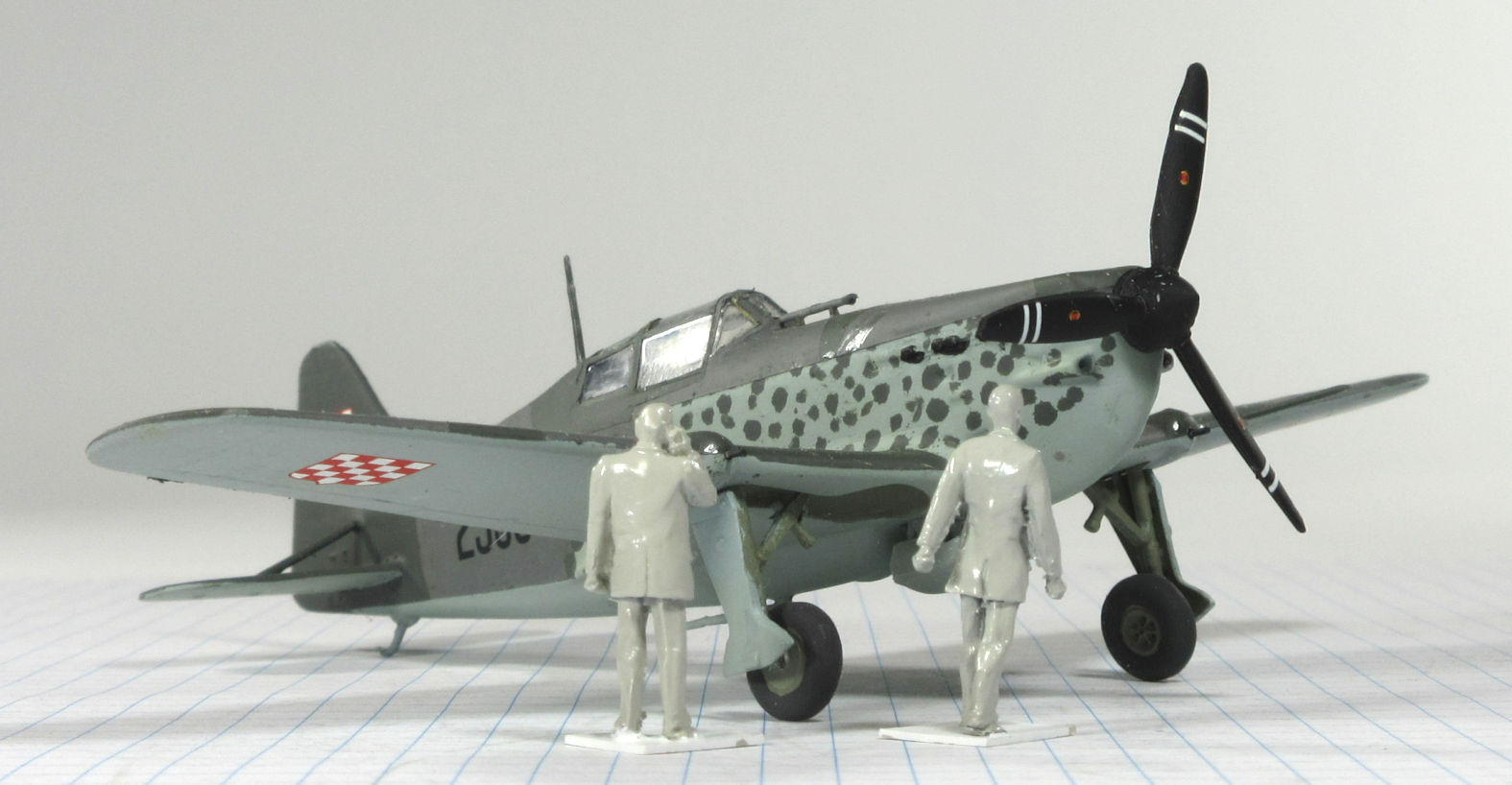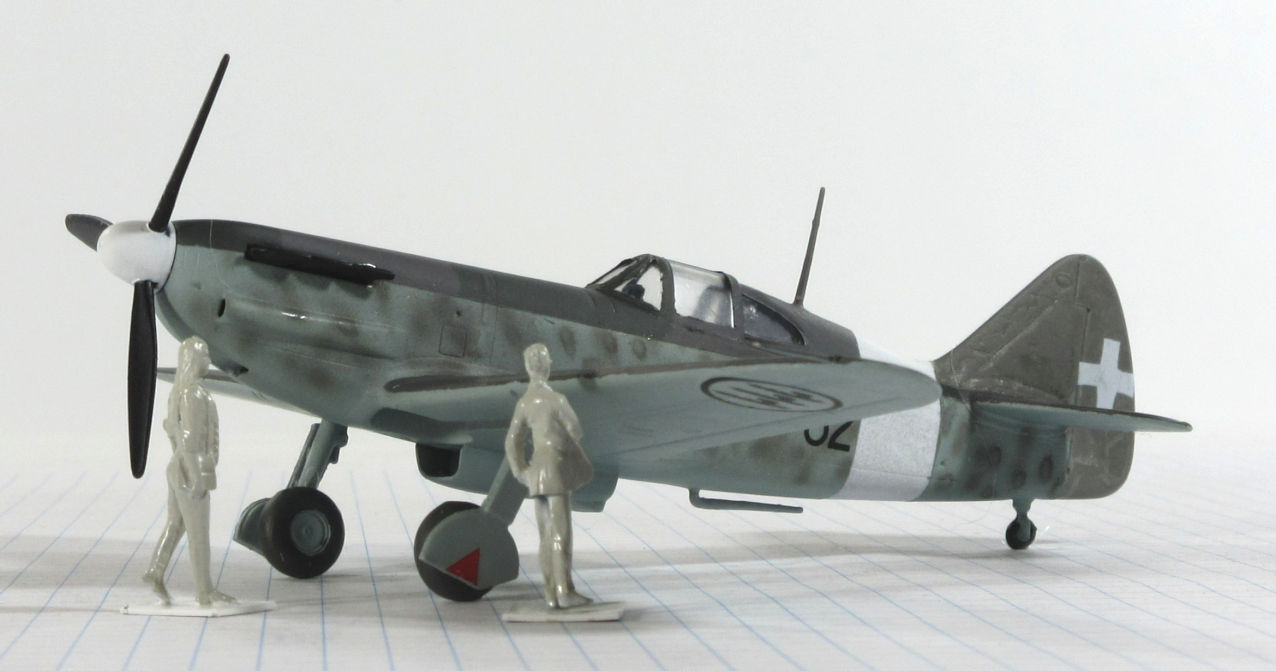French Fighters in Foreign Service
Caudron 714 – Morane Saulnier 406 – Dewoitine 520

The Gallery of Fighter Aircraft is filling up rapidly. Let’s not speculate here on the reasons but just recognize that there is an awful lot to look at when you come into this gallery. As you wander around this gallery you will notice that there are a lot of French fighters, probably because your humble curator is partial to most things French. To select a few from all those lovely French flying machines, here are three that ended up flying for other air forces during World War II.
Finnish Caudron 714 in 1/72 by RS Models
The Caudron 714 was a French attempt to make a successful light weight fighter. It was an evolution of the Caudron series of racing aircraft made during the 1930s, upgraded somewhat for a military role. It was far from successful and the few that were flown in the Battle of France were severely outclasses. Eighty were to be delivered to Finland but events in France meant only six were delivered. In Finland they were found too unreliable and dangerous to use in Finnish conditions and were not committed to combat.
For such an unsuccessful aircraft there are a few kit choices. The most obtainable is the Heller kit which was also published by Smer. It was first published in 1967 and has appeared in a few different boxes, but all the same basic, simple and dated kit. It builds up okay but leaves a lot of be desired. According to the Scalemates there is a Reflex kit that dates from the 1980s and has appeared under four other labels, but I haven’t seen a copy so can’t comment. There was also a Dujin kit, which may have been necessary when only the Heller kit was available, but it wasn’t the one to make after the RS Models kit was released in 2012. This kit has some of the problems that seem to come with all limited run injection moulded kits but is otherwise excellent and highly recommended.
Croatian Morane Saulnier 406 in 1/72 by RS Models
The Morane Saulnier 406 was the main fighter used by France during the Battle of France but it was outclassed by German Messerchmitt Bf109Es and suffered heavy losses. Despite this, after the fall of France many of these aircraft were pressed into service in French and other air forces. After Italy pulled out of the war in 1943 and the Americans could base their aircraft in the south of that country so it was much easier for their bombers to reach targets in the Balkans. To counter them, in 1944 the Crotaian Air Force was given 48 Morane Saulnier 406s which were totally outclassed by American escort fighters, the P-47s and P-51s.
There are many choices when it comes to kits of the Morane Saulnier 406 in 1/72. Some very old ones are the Heller and Frog kits which date from the 1960s and are best avoided. That, however, is difficult if you are looking for a cheap kit because they both have appeared under many labels in the past fifty years. There are also more recent kits from Azur, Hobby Boss and Hasegawa, all of which are reasonable kits but not my favourtie choice. For me the most recent and best detailed kit comes from RS Models and was first published in 2011. Like that company’s Caudron 174 kit, it suffers some of the problems of limited run kits but also builds up relatively easy into a very nice model. In addition, RS Models also offers variants of the 406 including the Morko Morane and the Doflug 3802/3803.
Italian Dewoitine 520 in 1/72 by RS Models
The Dewoitine 520 entered service with the French air force after the declaration for World War II but before the Battle of France. It could compete with German fighters and, though it was slower than the Messerchmitt Bf109E, it was more manoeuvrable and so a capable dogfigher. After the fall of France production of the Dewoitine 520 continued and it served with several Axis air forces. The Italian Regia Aeronautica acquired about 60 of these fighters which the Italian pilots used with some success against raiding American bombers.
Like the Morane Saulnier 406, there are plenty of kits of the Dewoitine 520 in 1/72. Some of them, Heller and Frog, date from the 1960s and live on in a host of boxings that would be hard to avoid in the second hand market. The Hasegawa and Hobby Boss kits built up relatively well but, again, my preference is for the more modern RS Models kit which was first published in 2011. It comes in at least four different boxings, each with a few different markings. These are not Tamigawa kits but the little extra effort required to make them well is rewarded by the nice little models.



